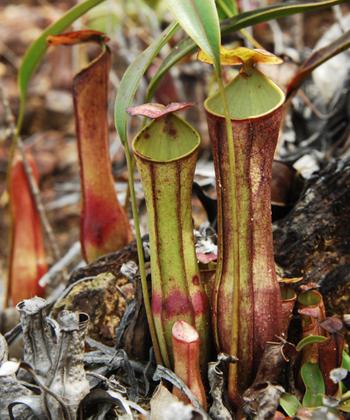From the wonders of the human body to the spectacles of nature
Posted on June 3, 2024 by Clare Baker
Each month, the Microbiology Society publishes the International Journal of Systematic and Evolutionary Microbiology, which details newly discovered species of bacteria, fungi and protists. Here are some of the new species that have been discovered and the places they've been found.
Welcome back to New to Science. This month we’re looking at both the beauty of nature and the beauty of the human body for our new microbes.
Let’s start with a story of how incredible the human body is. Streptococcus hohhotensis is a novel bacterium isolated from the breast milk of a healthy woman in Hohhot, China. Human breast milk was initially considered to be a sterile fluid, but it actually contains an important microbiota which is integral in creating the intestinal microbiota of infants. Our new microbe belongs to the genus Streptococcus, which are lactic acid bacteria, dominant in breast milk. A specific group of Streptococci known as viridans prevents the growth of methicillin-resistant Staphylococcus aureus, which can be beneficial to the intestinal health of infants.
Moving on from babies and breast milk, but staying in the human body, to Ottowia cancrivicina, which was isolated from a human stomach paracancerous tissues. O.cancrivicina, named after it’s association to a cancer, is a Gram-negative, facultative anaerobic bacterium. When researchers compared the gene sequences of the strain with uncultured strains isolated from the oral cavity of animals and humans, they spotted high similarities. This suggests that the isolated strain is most likely to have come from the human oral cavity, possibly from neighbouring gastric cancer tissues after the saliva entered the stomach.
Moving on from humans to man’s best friend. No, not dogs, but cars. Our next new microbe was isolated from the air conditioning unit in a car in Korea. Unfortunately for any car enthusiasts out there, the authors neglected to tell us the make and model, so I’ll have to leave that to your imagination. The two strictly aerobic and rod-shaped bacterial species were named Enterovirga aerilata, after it’s airborne nature, and Knoellia koreensis, after Korea. Air conditioning (AC) systems have attracted attention from researchers as they serve as ideal habitats for microbes thanks to the moisture and nutrient-rich environments. Understanding the microbial communities present in the AC systems can help researchers to mitigate the potential health risks associated with the systems and ensure their efficient operation.
Let’s move on from the man-made and take a look at some species that were found in nature, shall we? Pengzhenrongella phosphoraccumulans was isolated from a high Arctic glacial till near the settlement of Ny-Ålesund in the Svalbard Archipelago, Norway. It earns the name phosphoraccumulans, pertaining to its metabolic pathway related to phosphorus accumulation.

And finally, let’s finish with our Microbe of the Month for June, Commensalibacter nepenthis isolated from a close-pitcher cup. No, it’s not a drinking receptacle owned by someone who throws the ball in a baseball game, it’s the leaves of a plant called Nepenthes gracilis, or the Slender Pitcher Plant. These freaky looking plants may look pretty but are actually insectivorous - they eat insects. During heavy rain, the plant’s lid catapults insects seeking shelter into their fluid-filled pitcher where they find their demise instead. Our bacterium was discovered alongside Commensalibacter oyaizuii (isolated from an insect sample of Junonia lemonias, common name, lemon pansy butterfly) during a study of bacterial diversity in insectivorous plants and insects in Thailand from 2015–2022.

